Did you know that for every extra pound of body weight, your knee joints endure an additional four pounds of stress? This startling fact underscores the critical role of maintaining a healthy lifestyle to protect your knee joint as you age. Your knees are vital for mobility, and neglecting their care can lead to pain, stiffness, and even injury.
Regular exercise, balanced nutrition, and proper body mechanics are essential for supporting your knee joint. Strengthening the muscles around your knees, such as the hamstrings and quadriceps, can significantly improve joint stability and reduce the risk of injuries. Additionally, maintaining a healthy weight not only alleviates pressure on your knees but also reduces inflammation, a key factor in conditions like osteoarthritis.
Experts recommend incorporating low-impact activities, such as swimming or cycling, into your daily routine to promote joint health without overtaxing your knees. Furthermore, paying attention to your posture and footwear can prevent unnecessary strain on your knee joint. By adopting these simple yet effective strategies, you can take proactive steps to safeguard your knee health and maintain an active, pain-free life as you age.
Key Takeaways
- Excess weight increases stress on knee joints, emphasizing the importance of weight management.
- Strengthening muscles around the knees enhances stability and reduces injury risk.
- Low-impact exercises like swimming or cycling support joint health without excessive strain.
- Proper posture and footwear can prevent unnecessary knee strain.
- A balanced diet rich in anti-inflammatory foods promotes overall joint health.
Understanding Senior Knee Health
Your knee joint is a complex structure designed to support your body and enable movement. As you age, natural wear and tear can affect its function, leading to issues like pain and stiffness. Understanding how your knee works and the changes that come with age can help you take better care of it.
The Function of Knee Joints
The knee joint connects your thigh bone (femur) and shin bone (tibia), with the kneecap (patella) sliding in a groove to facilitate movement. Cartilage cushions the bones, allowing smooth motion, while ligaments and tendons provide stability. Surrounding muscles, like the hamstrings and quadriceps, power movements such as walking and climbing stairs.
Common Age-Related Knee Changes
As you get older, the cartilage in your knee joint can wear down, leading to conditions like osteoarthritis. This causes pain, swelling, and stiffness. The ligaments and muscles around the knee may also weaken, reducing joint stability. However, keeping the muscles strong through exercise can help support the knee and maintain mobility.
Regular activity, such as low-impact exercises, can slow down these changes and keep your knees healthy. Strengthening the muscles around the knee is especially important for maintaining support and reducing the risk of injury or pain.
How A Healthy Lifestyle Can Improve Senior Knee Health
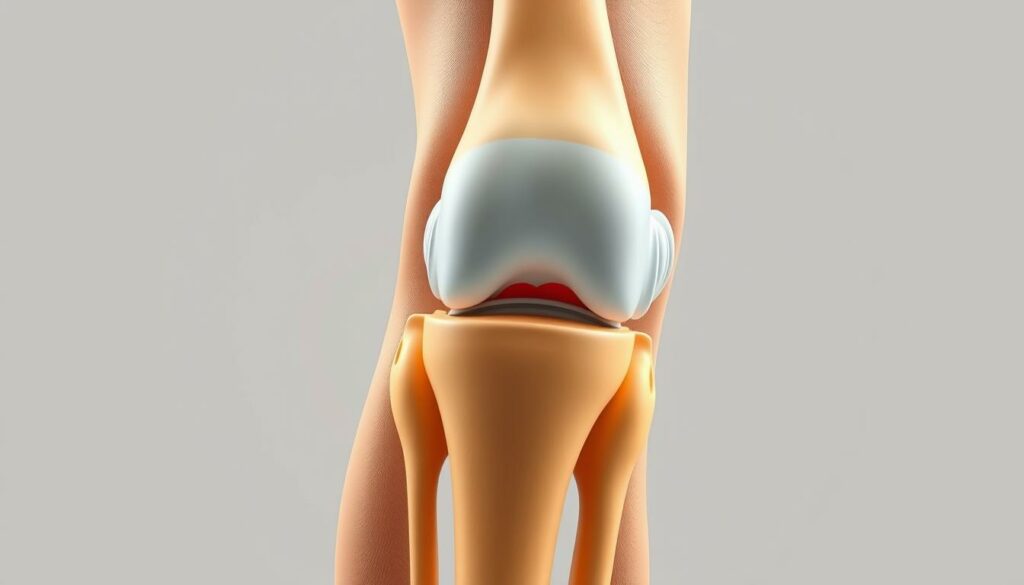
Adopting a healthy lifestyle is crucial for maintaining strong and pain-free knees as you age. Simple adjustments to your daily routine can make a significant difference in your joint health and overall mobility.
Key Lifestyle Adjustments for Better Knee Function
Regular physical activity is one of the most effective ways to support your knee joint. Low-impact exercises like swimming or cycling can reduce joint stress by up to 60% compared to high-impact activities. Strengthening the muscles around your knee, such as the hamstrings and quadriceps, can improve stability and reduce pain.
Maintaining a healthy weight is another important factor. For every 10 pounds lost, you relieve 30 pounds of force on your knee with each step. A balanced diet rich in anti-inflammatory foods, such as those found in the Mediterranean diet, can also help reduce inflammation and promote joint health.
Choosing activities that protect your knees from repetitive stress is essential. For example, wearing flat, flexible shoes can reduce pressure on your knees and improve walking ability. Additionally, incorporating strengthening exercises into your routine can reduce knee pain by 50% for those with osteoarthritis.
- Engage in low-impact exercises to support joint health.
- Maintain a healthy weight to reduce knee joint stress.
- Strengthen muscles around your knee for improved stability.
- Adopt a balanced diet to reduce inflammation.
By making these simple yet effective lifestyle adjustments, you can reduce pain, slow the progression of osteoarthritis, and maintain an active life. Consistency is key, so find activities you enjoy and make them a part of your daily routine.
Exercise and Movement Strategies for Stronger Knees
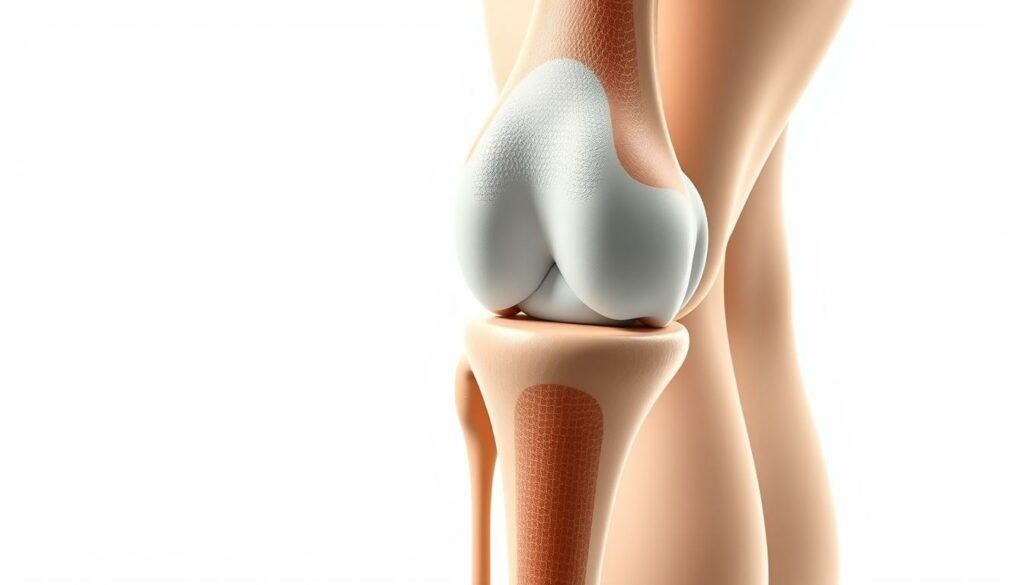
Exercise plays a vital role in maintaining knee strength and mobility as we age. Incorporating the right activities into your routine can significantly reduce the risk of pain and injury while improving overall joint function.
Low-Impact Aerobic Activities
Low-impact exercises are ideal for seniors, as they minimize stress on the knee joint while providing excellent cardiovascular benefits. Walking, swimming, and cycling are top recommendations. These activities strengthen the muscles around the knee without putting excessive strain on the joint. Swimming, for instance, offers gentle resistance that can improve muscle tone without discomfort.
Water aerobics is another excellent option, combining the benefits of swimming with structured exercises in a group setting. These activities not only support joint health but also enhance overall mobility and balance.
Strength Training to Support Knee Joints
Strength training is essential for building the muscles around your knees, which helps absorb shock and reduces pressure on the joint. Simple exercises like squats, lunges, and resistance band workouts can make a significant difference. When performing these exercises, focus on proper form to avoid injury and maximize benefits.
For example, bodyweight squats can strengthen the quadriceps and hamstrings. Start with a partial range of motion and gradually increase as your strength improves. Resistance bands provide gentle yet effective resistance to target the muscles around the knee joint.
Consulting with a physical therapist can help tailor an exercise program to your specific needs, ensuring safety and effectiveness. They can guide you through exercises that enhance mobility and reduce pain, making it easier to stay active and maintain independence.
Remember, consistency is key. Even short, regular sessions can lead to noticeable improvements in knee function and overall mobility. By combining aerobic and strength training exercises, you can create a well-rounded routine that supports knee health and reduces the risk of injury.
Nutrition, Weight Management, and Joint Support
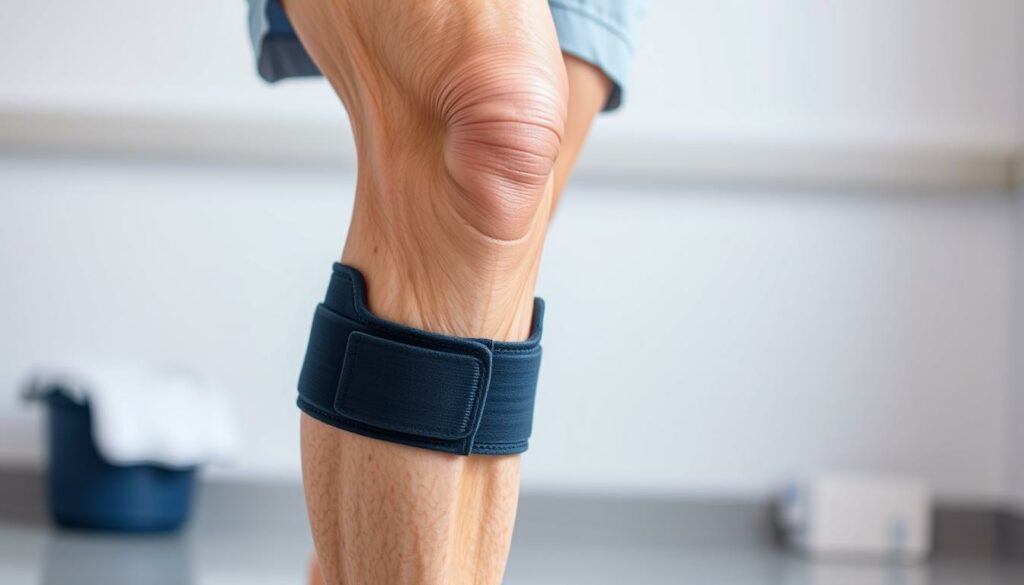
Diet and weight management play a crucial role in supporting joint health and reducing knee pain. A well-balanced diet not only helps manage inflammation but also supports overall well-being, making it easier to maintain an active lifestyle.
Anti-Inflammatory Foods and Supplements
Incorporating anti-inflammatory foods into your diet can significantly reduce joint inflammation and alleviate knee pain. Fatty fish, such as salmon and mackerel, are rich in omega-3 fatty acids, which help combat inflammation. Berries, leafy greens, and olive oil are also excellent choices, as they contain antioxidants that protect joints from damage.
A diet rich in whole foods is a powerful tool for managing joint health and reducing pain.
Supplements like turmeric and ginger have natural anti-inflammatory properties and can be beneficial. However, it’s essential to consult with a healthcare provider before starting any new supplement regimen.
Healthy Weight Management Tips
Excess weight increases the stress on your knee joint, leading to pain and potential damage. Losing just one pound can reduce knee stress by four pounds, making weight management a critical factor in joint health. Focus on nutrient-rich foods like fruits, vegetables, and whole grains to maintain a healthy weight without compromising nutrition.
Practical Tips:
- Balance calories with nutrient-dense foods to support weight loss and joint health.
- Aim for gradual weight loss of 1-2 pounds per week for sustainable results.
Even modest weight loss can significantly reduce knee pain and improve mobility, enhancing overall quality of life.
Preventing Knee Injuries and Managing Pain

Knee injuries can disrupt daily life, causing pain and limiting mobility. Protecting your knees from harm and knowing how to manage pain when it occurs are essential for maintaining an active lifestyle.
Injury Prevention Techniques and the RICE Method
Preventing knee injuries begins with awareness and proper techniques. Whether during daily activities or sports, taking proactive steps can significantly reduce the risk of harm.
- Avoid high-impact activities that put excessive stress on your knees, such as repetitive jumping or running on hard surfaces.
- Use proper lifting techniques to avoid straining your knee joint. Bend at the hips and knees, keeping the object close to your body.
- Wear protective gear, like knee braces, during high-risk activities to provide additional support.
When an injury occurs, the RICE method is a proven approach to manage pain and promote healing:
Rest, Ice, Compression, and Elevation are the cornerstones of immediate injury response.
- Rest the injured knee to avoid further damage.
- Ice the area for 15-20 minutes every 1-2 hours to reduce swelling.
- Compression with a bandage or brace to provide support.
- Elevation above heart level to minimize swelling.
Listening to your body and seeking medical attention when necessary can prevent minor issues from becoming serious. Experts recommend modifying exercise routines and seeking professional care if pain persists beyond a few days.
Everyday Tips: Posture and Support for Healthy Joints
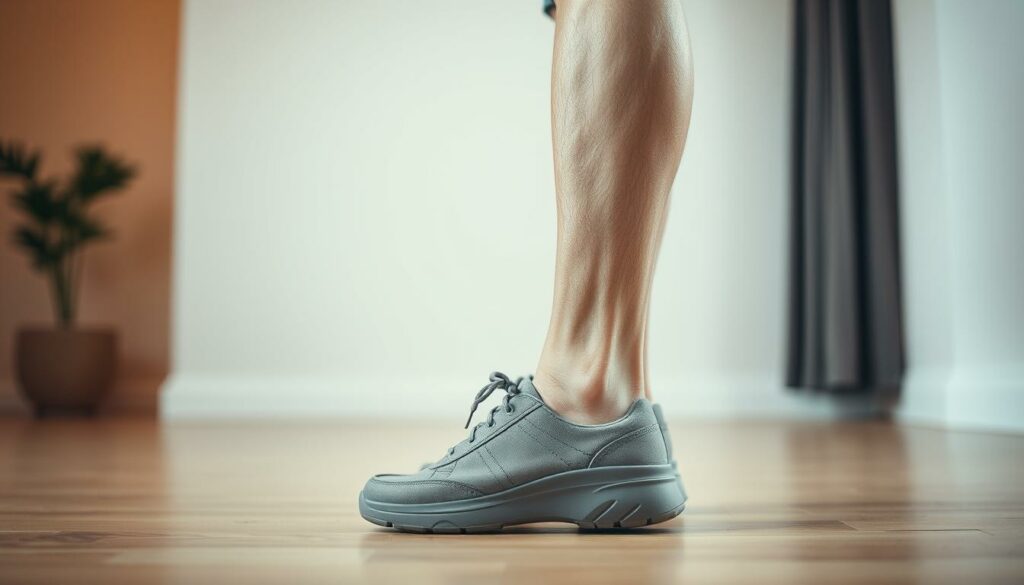
Maintaining healthy joints requires more than just exercise and diet. Simple everyday adjustments can make a big difference in reducing knee pain and improving mobility. By focusing on proper posture, selecting the right footwear, and incorporating easy at-home exercises, you can protect your knee joint and maintain an active lifestyle.
Proper Footwear and Posture Practices
Choosing well-fitting, supportive footwear is essential for reducing stress on your knees. Opt for shoes with good arch support and cushioning to absorb shock during walking or standing. Avoid high heels, as they can increase pressure on the knee joint.
Maintaining proper posture during daily activities is equally important. When standing, keep your weight evenly distributed on both feet, and when sitting, ensure your knees are at or below hip level. This helps prevent joint misalignment and reduces pain.
Simple At-Home Stretching and Strengthening Routines
Incorporate simple stretching exercises to improve flexibility and reduce tension around the knee and hip. For example, try standing hamstring stretches or seated forward bends. These exercises can be done in just a few minutes and require no special equipment.
Strengthening the muscles around your knee enhances stability and reduces pain. Bodyweight exercises like wall sits or step-ups are effective and easy to perform at home. Remember to focus on proper form to avoid injury and maximize benefits.
- Select supportive footwear with good arch support and cushioning.
- Maintain proper posture during standing and sitting to prevent joint misalignment.
- Incorporate simple stretching routines to improve flexibility and reduce tension.
- Strengthen muscles around the knee with bodyweight exercises like wall sits.
By integrating these practices into your daily routine, you can take proactive steps to protect your knee joint and maintain long-term joint health.
Conclusion
In conclusion, taking care of your knee joint is essential for maintaining mobility and reducing pain as you age. By combining regular exercise, balanced nutrition, and smart lifestyle choices, you can significantly support your joint health and prevent degeneration.
Consistent movement, proper posture, and a balanced diet play key roles in overall joint health. Applying the practical tips discussed, such as low-impact exercises and muscle-strengthening activities, can enhance mobility and lower the risk of knee injuries. While knee pain is common with age, informed choices and regular care can make a significant difference.
Remember, seeking professional advice when necessary and staying committed to a healthy lifestyle are crucial for lasting knee support. Empower yourself to take control of your joint health with confidence and maintain an active, pain-free life.
** Our website contains affiliate links. This means if you click and make a purchase, we may receive a small commission. Don’t worry, there’s no extra cost to you. It’s a simple way you can support our mission to bring you quality content.
FAQ
What causes knee pain in older adults?
Knee pain in older adults is often due to osteoarthritis, which wears down the cartilage around the knee joint. Factors like weight, age, and previous injuries can also contribute to discomfort and stiffness.
How can I reduce the risk of knee injuries?
Strengthening the muscles around the knee, such as the hamstrings and quadriceps, can provide better support. Wearing proper footwear and avoiding high-impact activities can also lower your risk of injury.
What are the best exercises for knee strength?
Low-impact activities like swimming, cycling, or using an elliptical machine are excellent for building strength without putting extra pressure on the knee joint. Strengthening exercises for the thigh and hip muscles can also help stabilize the knee.
Can weight loss help with knee pain?
Yes, maintaining a healthy weight reduces the pressure on your knee joint. Excess weight can strain the ligaments and cartilage, leading to pain and wear over time.
How can I manage knee pain without surgery?
Non-surgical options include physical therapy, anti-inflammatory medications, and low-impact exercises. Applying the RICE method (Rest, Ice, Compression, Elevation) can also help reduce swelling and pain.
What foods are best for joint health?
Incorporating anti-inflammatory foods like omega-3 rich fish, turmeric, and leafy greens can support joint health. Supplements like glucosamine and chondroitin may also help reduce knee pain and stiffness.
How can I improve mobility in my knees?
Regular stretching and strengthening exercises can enhance knee mobility. Activities like yoga or tai chi can also improve flexibility and reduce stiffness in the joint.
What are the symptoms of knee arthritis?
Common symptoms include pain, swelling, stiffness, and limited range of motion. In severe cases, you may hear a grinding or popping sound when moving the knee.
Can I still play sports if I have knee pain?
Yes, but choose low-impact sports like swimming or cycling to avoid further strain. Always warm up and cool down to protect the joint and surrounding muscles.
How can I prevent knee stiffness after sitting?
Stretching regularly and taking short walks can help maintain flexibility. Avoid sitting for long periods without moving, as this can lead to stiffness and discomfort.

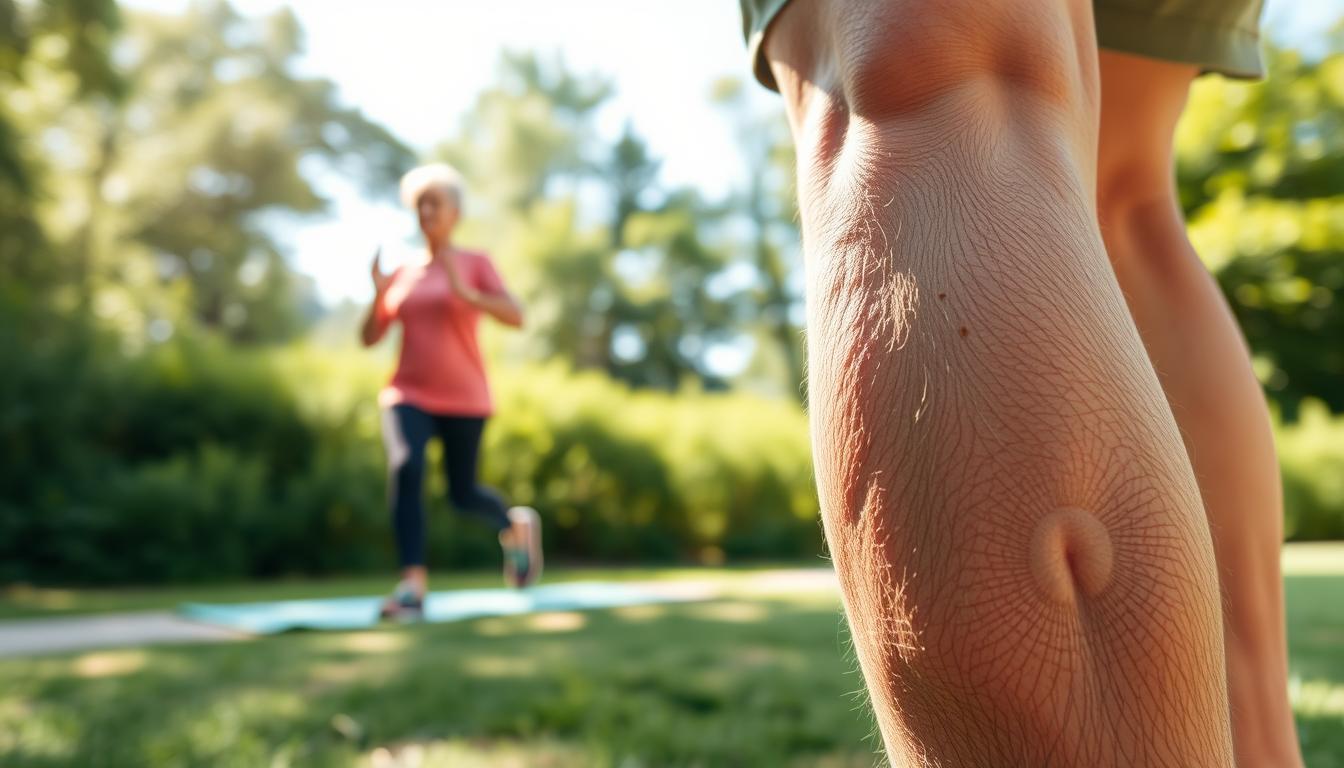
This article really puts things into perspective—it’s a clear reminder that every small lifestyle choice, from managing our weight to selecting the right shoes, plays a vital role in protecting our knees as we age. I was struck by how even an extra pound can mean significant extra stress on our joints. It’s encouraging to see practical strategies, like low-impact exercises and a balanced, anti-inflammatory diet, that can make a real difference in reducing pain and maintaining mobility. I will say, it makes me rethink daily habits and inspires a proactive approach to long-term joint health.
Hi Dan,
Thank you for your insightful comment! I’m so glad the article resonated with you. It’s amazing how even small lifestyle adjustments can have a big impact on knee health over time. Being mindful of weight, choosing supportive footwear, and incorporating low-impact exercises are all powerful ways to protect our joints and maintain mobility.
It’s great to hear that the article inspired you to take a proactive approach—every step counts when it comes to long-term joint health! Wishing you strength and comfort on your journey. ????
Cheers
John